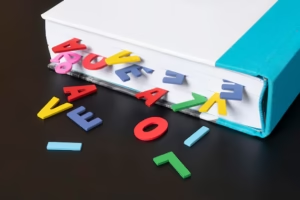5 Techniques to Enhance Reading Comprehension Skills for Students

Understanding Reading Comprehension
Reading comprehension refers to the ability to read a text, understand its meaning, and integrate that understanding into one’s existing knowledge. It involves not only the recognition of words and phrases but also the interpretation of concepts, themes, and the overall context of the content. This skill is essential for academic achievement and is a foundational aspect that influences students’ success across various subjects. The capacity to comprehend what is read affects learners’ ability to engage with different types of texts, including literary works, scientific articles, and informational texts.
The significance of strong reading comprehension skills cannot be overstated. In an educational environment, students are often required to analyze and synthesize information from multiple sources, necessitating a robust understanding of the material. Comprehension enables students to draw inferences, make connections with other knowledge, and critically evaluate the arguments presented in their readings. Consequently, students who excel in reading comprehension tend to perform better across their academic coursework, leading to enhanced opportunities for further education and career development.
Despite its importance, many students encounter challenges in developing effective reading comprehension skills. These challenges may include difficulties with vocabulary, lack of prior knowledge about a subject, or issues with focus and concentration during reading sessions. Furthermore, the varying complexity of texts can present additional obstacles; some genres require different strategies, and not all students are adept at adapting their reading methods accordingly. Recognizing these challenges is vital for educators and parents so they can provide appropriate support and encouragement to help students enhance their reading comprehension skills. A targeted approach, which addresses specific difficulties, can facilitate improvement and promote a long-lasting appreciation for reading.
The Importance of Improving Reading Comprehension
Reading comprehension is a fundamental skill that serves as the foundation for academic achievement and lifelong learning. It is vital for students to develop strong comprehension skills, as these abilities directly influence their performance in various subjects. When students can understand and interpret texts effectively, they are more likely to excel in writing, mathematics, sciences, and social studies. Strong comprehension fosters better academic results, creating a pathway to success in higher education and future careers.
Moreover, improved reading comprehension enhances communication skills. Students who can accurately interpret written information are better equipped to engage in discussions, articulate their thoughts, and convey complex ideas clearly. This ability not only benefits students in their academic endeavours but also prepares them for professional environments, where effective communication is essential. The capacity to understand context, tone, and nuances in texts enables students to participate meaningfully in conversations, contributing to their overall social competence.
In addition, reading comprehension is closely tied to critical thinking. When students engage with texts, they learn to analyze information, evaluate arguments, and draw conclusions. This critical engagement with reading material fosters independent thinking, encouraging students to question and reflect on the world around them. As they navigate diverse viewpoints and sources of information, students are better prepared to become informed citizens who can reason through societal issues and contribute to discussions impacting their communities.
The implications of strong reading comprehension skills extend beyond the classroom. They equip students with the tools necessary for lifelong learning, facilitating an ongoing pursuit of knowledge throughout their lives. As individuals continue to encounter new information and navigate complex scenarios, those with proficient comprehension abilities will find it easier to adapt, learn, and thrive in an ever-changing world.

Skimming: A Fast and Effective Reading Technique
Skimming is a highly efficient reading technique employed to quickly gather the essence of a text without delving into extensive detail. This approach is particularly useful in contexts where time is limited, such as during exam preparation, research review, or when assessing larger volumes of written material. By focusing on the main ideas rather than every single word, students can effectively enhance their reading comprehension skills, allowing them to grasp the overall structure and key points of the content more rapidly.
Readers can utilize skimming when they are tasked with understanding a document’s primary message or determining its relevance. Employing this technique enables individuals to decide whether full engagement with the text is necessary, thus streamlining their study process. Moreover, skimming is beneficial in identifying critical sections that merit a more detailed reading later on.
To engage in effective skimming, students should develop a strategic approach. One practical tip is to look for keywords or phrases that often indicate the main ideas, such as nouns and verbs that carry substantive meaning. Furthermore, paying close attention to headings, subheadings, and bulleted lists can provide insight into the organization and focal points of the material. Visuals, such as charts and graphs, can also be crucial indicators of essential information and relationships between concepts.
Additionally, students should practice moving their eyes quickly over the text without pausing on individual words. This technique encourages the brain to absorb information more holistically, thus improving retention. Allocating specific moments for review after skimming can aid in reinforcing understanding and solidifying the major points identified during the initial pass.
Summarizing: The Art of Condensing Information
Summarizing is a critical skill that plays a significant role in enhancing reading comprehension. By condensing information, students can distill complex texts into manageable insights, which not only reinforces understanding but also promotes retention of key concepts. The ability to summarize effectively allows students to identify essential ideas while eliminating extraneous information, thus streamlining their study process and improving overall academic performance.
One of the primary techniques in effective summarization is the identification of key points. This involves reading through a text to discern the main ideas and supporting details. To start, students should ask themselves questions like: What is the main argument or purpose of the text? What details or examples support this argument? By focusing on these essential elements, students can create summaries that capture the essence of the material they are studying.
Additionally, using one’s own words is vital in the summarization process. This technique not only encourages active engagement with the text but also aids in internalizing the content. When students paraphrase information rather than copying it verbatim, they demonstrate a deeper understanding of the material. This practice can involve rephrasing sentences or restructuring the order of ideas presented in the original text, which further enhances comprehension.
For example, after reading a passage on photosynthesis, a student might summarize it by stating, “Photosynthesis is the process by which green plants convert sunlight, carbon dioxide, and water into glucose and oxygen, highlighting its importance for energy production.” In this sentence, the student encapsulates the main concept while employing their own wording, effectively demonstrating comprehension of the learned material. Ultimately, mastering the art of summarizing equips students with a valuable tool that not only aids in understanding complex texts but also enhances their overall academic capabilities.
Identifying Key Points: The Backbone of Comprehension
Reading comprehension is fundamentally anchored in a student’s ability to identify key points within a text. Recognizing main ideas and supporting details plays a pivotal role in enhancing overall understanding, allowing students to retain and recall information more effectively. By isolating these essential components, readers can cultivate a clearer mindset about the material, thus facilitating deeper engagement and learning.
The first step in identifying key points involves previewing the text. By skimming headings, subheadings, and introductory paragraphs, students can gain a preliminary overview. This practice aids in setting expectations for content, enabling them to focus on relevant information as they progress through the material. Additionally, employing strategies such as highlighting or annotating can serve to mark critical points dynamically. Encouraging students to underline or circle main ideas, and write short notes in margins, fosters active interaction with the text.
Another effective technique is to question the material as they read. Posing queries such as “What is the main idea here?” or “How does this detail support the overarching concept?” compels students to think critically about the content. This method not only helps to differentiate between important and less relevant information but also reinforces retention by engaging cognitive processes during reading. It is important to instruct students on recognizing signal words and phrases that often indicate significant points, such as “key”, “important”, or “for example.”
As students refine their ability to discern these key elements, they will find that their comprehension improves significantly. The capacity to sift through information enhances analytical skills and ultimately contributes to a more substantial academic performance. Thus, the practice of identifying key points stands out as an indispensable technique in the pursuit of higher reading comprehension skills.
Active Reading Strategies: Engaging with the Text
Active reading is a purposeful approach that encourages students to interact with texts, fostering a deeper understanding and retention of information. To enhance reading comprehension skills, students can utilize various strategies such as questioning, predicting, and visualizing, each designed to stimulate critical thinking and engagement.
One effective technique is questioning, which involves students asking themselves questions before, during, and after reading. This method encourages learners to clarify their understanding and delve deeper into the material. For instance, a student might start by asking, “What do I already know about this topic?” or “What is the author’s purpose in this text?” By actively seeking answers, students are likely to comprehend and recall information better.
Another valuable strategy is predicting, where students contemplate the text’s possible direction based on the title, headings, and images. For example, before reading a chapter, students might predict the main ideas or themes based on the first paragraph or key illustrations. This technique not only piques curiosity but also sets a purpose for reading, enhancing their engagement and comprehension as they check their predictions against the actual content.
Visualizing is another powerful active reading strategy that involves creating mental images of the concepts presented. Students can enhance their comprehension by imagining scenarios, characters, or settings described in the text. For example, while reading a narrative, a student might visualize the environment, thus creating a more vivid understanding of the content. Such imagery can make information more memorable and relatable.
Incorporating these active reading strategies into daily reading practices can significantly bolster students’ engagement with texts, leading to improved comprehension skills. Students are encouraged to experiment with these strategies to find the combination that works best for their learning styles, ultimately enhancing their academic performance.
The Role of Vocabulary in Reading Comprehension
Vocabulary plays a crucial role in reading comprehension, influencing a student’s ability to understand and interpret texts. A well-developed vocabulary allows students to grasp the meanings of words, which is essential for decoding phrases and sentences. When students encounter complex texts, their understanding largely relies on their familiarity with the vocabulary employed by the author. Research consistently shows that a strong vocabulary correlates with improved reading proficiency and overall academic success. When students possess a wide range of words, they are better equipped to infer meanings, comprehend nuances, and engage critically with the material presented.
One effective strategy to build vocabulary is through the use of context clues. Context clues are hints found within the surrounding text that help define an unfamiliar word. By teaching students to look critically at the language surrounding unknown vocabulary, they can develop the skills needed to make educated guesses about meanings. Another useful tool is the implementation of word maps, which visually organize information about a particular word. These maps enable students to explore a word’s definition, synonyms, antonyms, and usage in sentences, prompting deeper understanding and retention of vocabulary.
Engaging with new words in context is another method to enhance vocabulary acquisition. When students read, discuss, and write about new terms in meaningful contexts, they are more likely to internalize the information and apply it in their own writing. Integrating vocabulary exercises into regular reading activities cultivates an environment where vocabulary development is prioritized, ultimately enriching overall comprehension skills. By focusing on vocabulary, educators can provide students with the tools necessary to unlock their reading potential, leading to increased confidence and performance in their academic pursuits.
Practice Makes Perfect: Exercises for Improvement
To enhance reading comprehension skills, engaging in regular exercises and activities is vital. One of the most effective techniques is skimming, which allows students to quickly identify the main ideas and structure of a text. An exercise that can be implemented is to present students with several articles or excerpts, asking them to skim the content and articulate the primary argument or theme. This practice not only elevates speed reading but also sharpens their ability to quickly discern important information.
Another useful exercise is summarizing. After reading a passage, students should write a brief summary encapsulating the key points. This task promotes an understanding of the text and reinforces retention of important facts and concepts. To diversify this activity, students can be encouraged to summarize in various formats, such as bullet points or visual mind maps, which cater to different learning styles while ensuring comprehension.
Additionally, identifying key points in a text can significantly boost reading skills. Teachers can provide students with diverse articles and challenge them to underline or highlight pivotal sentences that contribute to the overall meaning of the text. This method connects closely with active reading strategies, fostering a more interactive relationship with the material. Moreover, group discussions following these exercises can further solidify understanding, as sharing perspectives enhances analytical thinking.
Finally, practical applications of these techniques should be integrated into daily reading routines. Encouraging students to consistently practice skimming, summarizing, and identifying key points will build their confidence and proficiency over time. Moreover, tracking progress through logs or reflective journals can lead to meaningful insights about personal growth in reading comprehension. By embedding these exercises into their study habits, students pave the way for long-term enhancement of their reading skills.
Resources and Tools: Aiding Reading Comprehension
Enhancing reading comprehension requires not only effective techniques but also a variety of resources and tools that assist students in developing their skills. A well-rounded approach involves utilizing books, online platforms, educational apps, and structured reading programs tailored to foster comprehension. These resources can significantly aid students at different levels, promoting both understanding and retention of the material.
Books that focus on reading strategies, such as “Reading Magic” by Mem Fox or “The Reading Strategies Book” by Jennifer Serravallo, provide foundational techniques that empower students to dissect texts methodically. They emphasize key skills such as predicting outcomes, summarizing concepts, and inferring meanings, all of which bolster comprehension abilities.
Online platforms like ReadTheory and Newsela offer interactive reading experiences that adapt to each student’s level. These platforms present a variety of texts across genres, complemented by quizzes and comprehension questions to reinforce understanding. Engaging with diverse content not only piques students’ interest but also enhances their ability to grasp and analyze information from different contexts.
Educational apps such as Epic! and Scholastic’s Storia encourage reading through gamified experiences, allowing students to explore thousands of titles while tracking their progress. These tools enable the integration of visual and auditory elements, catering to different learning styles and improving retention of information through interactive engagement.
Structured reading programs, such as Reading Recovery and Guided Reading, provide targeted instruction aimed at specific comprehension challenges. These programs typically include progress monitoring and personalized feedback, ensuring that students can continuously build on their reading skills. As students interact with varied materials, they can develop analytical skills essential for comprehending increasingly complex texts.
In conclusion, various resources and tools are available to support students on their journey to improve reading comprehension. By exploring these options and integrating them into daily learning routines, students can enhance their skills and build a solid foundation for academic success.

